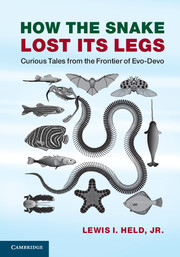5 - The cheetah
Published online by Cambridge University Press: 05 June 2014
Summary
Why animals decorate their skin
Many animals sport garish designs. Zebras, leopards, and giraffes are obvious examples [43,1480]. Some of these patterns camouflage the body to prevent detection [1788,2118], while others serve the opposite function of attracting attention [329,1010,2209]. In the latter category, the skin can act as a billboard to warn predators, attract mates, or intimidate rivals [399,1611,1692]. This signaling role is epitomized by the expressive faces of primates in general (Fig. 5.1) [1943,2107,2359] and of the mandrill in particular [1845]. Darwin was entranced by it:
No other member of the whole class of mammals is coloured in so extraordinary a manner as the adult male mandrill (Cynocephalus mormon). The face at this age becomes of a fine blue, with the ridge and tip of the nose of the most brilliant red. According to some authors the face is also marked with whitish stripes, and is shaded in parts with black, but the colours appear to be variable. On the forehead there is a crest of hair, and on the chin a yellow beard…When the animal is excited all the naked parts become much more vividly tinted. Several authors have used the strongest expressions in describing these resplendent colours, which they compare with those of the most brilliant birds.
[488] (Vol. 2, p. 292ff.)- Type
- Chapter
- Information
- How the Snake Lost its LegsCurious Tales from the Frontier of Evo-Devo, pp. 95 - 114Publisher: Cambridge University PressPrint publication year: 2014



